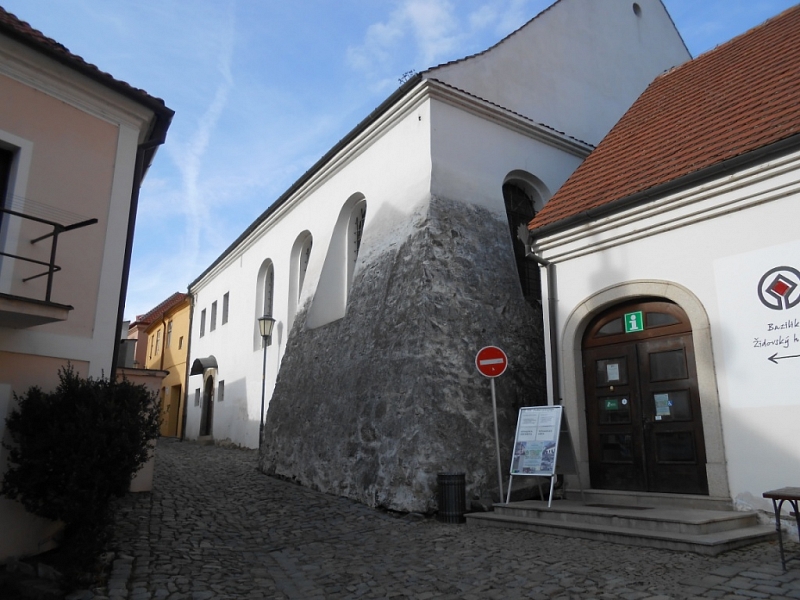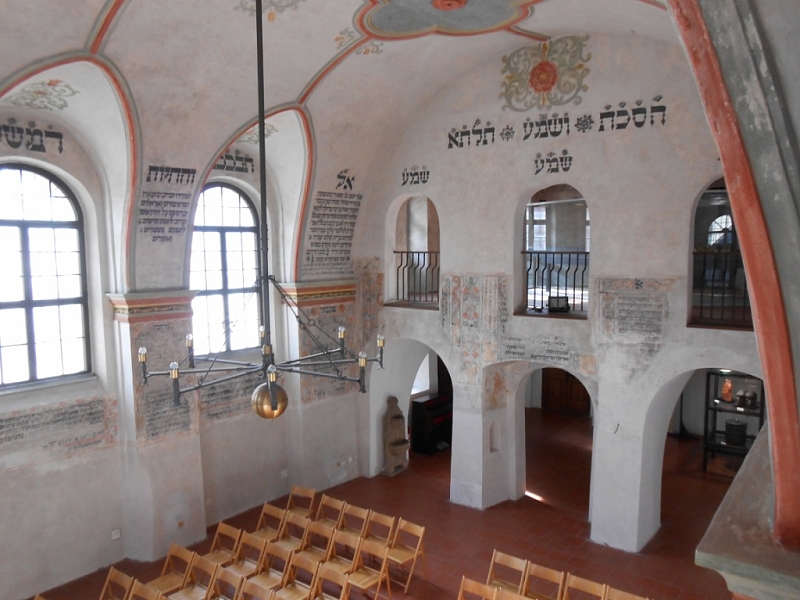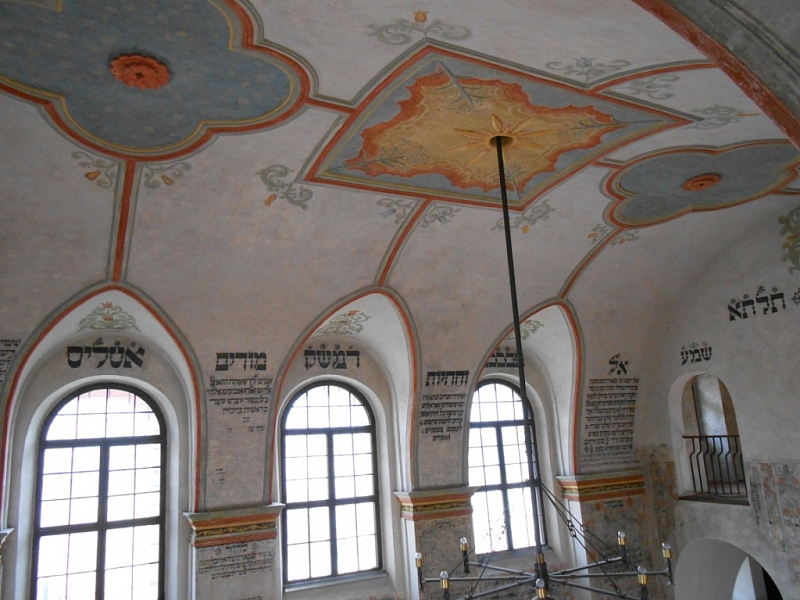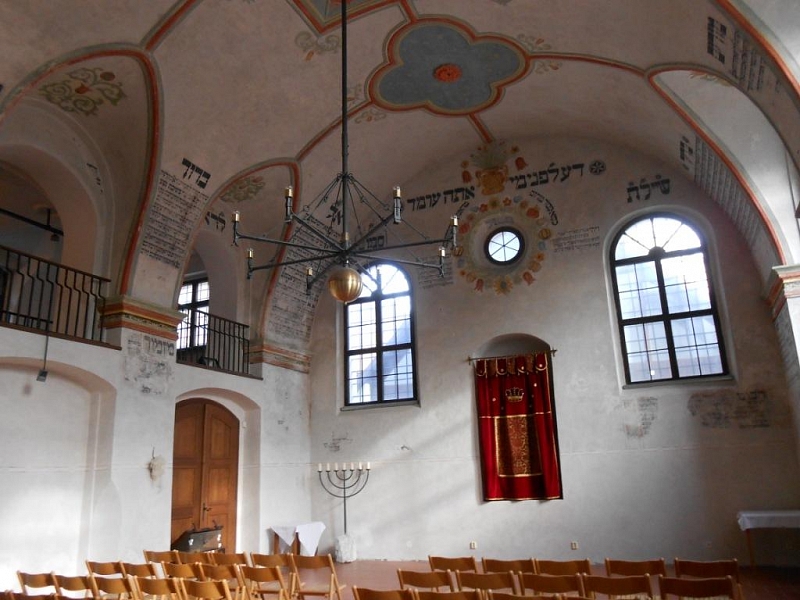Jewish rear synagogue in Třebíč
The Třebíč Jewish Quarter is part of the Jewish monuments in Třebíč, which are jointly inscribed on the UNESCO World Heritage List. One of the most important buildings here is the Rear Synagogue, dating from 1669.
Information for visitors
Interesting facts Jewish rear synagogue in Třebíč
The synagogue was not only a place of prayer, but also of education and gathering. In the Jewish quarter in Třebíč there are two synagogues named after their location, the Front and the Back Synagogue. The front synagogue was established in the years 1639-1642, but soon it was no longer enough. In the 1760s, the Jewish population grew very rapidly here, and in 1669 a second synagogue was built in Horní Židovská Street. Its strongest and most important wall is the southeastern wall, which faces Jerusalem and houses a box with the Torah, the basic Jewish teaching. This tabernacle is covered by a synagonal curtain.
There is a women's gallery on the first floor, because according to the Jewish faith, men and women must not be together in the tabernacle. However, this gallery was not added until 1837. Men from Blahoslavova Street entered the synagogue, and a staircase was built for the women directly to the gallery. A house was later built on the side of the stairs, of which it became a part. The walls of the synagogue are decorated with paintings dating from 1706-1707 and depict Hebrew liturgical texts and plant ornamental motifs. Although it is not common in Judaism to depict human figures, faces or animals, there is an exception in the form of several lions with the coat of arms of the Liechtensteins, the then owners of the estate. The vast majority of prayers on the walls are original, looking at their accuracy, one does not even want to believe that they were painted without templates just by hand. The stucco decoration of the ceiling dates from the later Baroque period.
The synagogue ceased to be used for religious purposes at the beginning of the 20th century, and was consecrated in 1920. It was then used as storage space for a tannery and an agricultural cooperative. The storage of skins and later potatoes had a bad effect on the state of the synagogue, which fell into disrepair, especially in the 1980s. Fortunately, in the years 1988-1997, its major reconstruction took place and the Rear Synagogue can be seen today by anyone interested. In addition, it is also used for exhibitions or concerts. The women's gallery houses an exhibition on Jewish culture and there is also an interactive model of the Jewish quarter captured as it looked in 1850.
Author: Martina Limbergová







